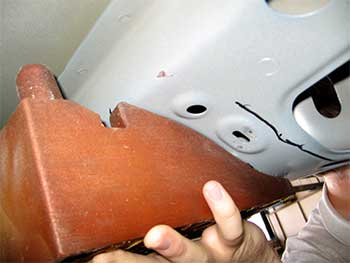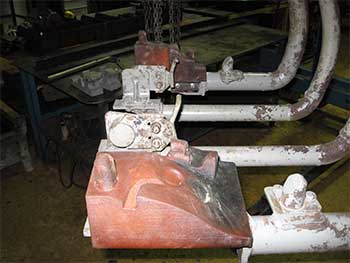“If we hadn’t tested these parts, and instead ordered them with the wrong design, it would have cost us up to 6 months in delays and over £10,000. Instead, because of the 3D printed parts, we were confident that the altered design would work perfectly so we could go to casting.” Graham Cooper
Vauxhall Motors Ltd., the UK division of General Motors, constantly drives to improve quality and productivity of its vehicles, while working to save time and costs during production.
In May 2014, the company was setting out to introduce a modified process hanger for the introduction and processing of future model variants with a key new innovation – a new part that would be used to support each vehicle body throughout the production process and allow it to be easily loaded and unloaded. This part is a critical piece and had to perfectly fit both the machinery to create correct clearances but also the model variants to avoid damage during production.

Graham Cooper, Senior Planning Engineer for the plant conveyor systems knew how critical these parts were and how precise they had to be for successful production. Since the final parts would be cast steel, at very high cost and with a lengthy lead time to manufacture them, he also knew that making a mistake would delay the introduction of the new equipment by up to 6 months or more.
The team contacted Tim Warwick, Managing Director at InfusionTech, a company that specializes in the post-processing of parts to build strength, heat resistance and other properties not immediately available in the original parts. Tim advised that 3D printed tools using the ProJet 660 Color Jet printing in combination with their infusion machine would deliver the accuracy and strength required to lift entire vehicles down the line during testing.
“The gypsum material used in this 3D printing platform is not particularly strong in its raw state,” said Tim, “But once we infuse with our tooling material we can deliver very tough, usable parts that meet very demanding needs.”

On receipt of the 3D printed parts, Graham and the team at Vauxhall installed them on the process hanger and started testing. According to Graham the parts performed perfectly and enabled the team to achieve the following:
- The 3d prints allowed us to check the accuracy of the CAD design against all of the vehicle location points on site prior to ordering the cast steel blocks.
- The printed blocks allowed us to complete the modifications to the automatic load station which loads each vehicle from a skid to the process hanger.
- Due to having the printed blocks on site we identified a problem with the height of the top location pin when automatically loading one of the model variants, therefore we have reduced the height of the pin and adjusted the automatic load station to suit.
- The printed blocks allowed the modifications to the automatic unload station which unloads each vehicle from the process hanger back to a skid.
- The blocks allowed our process department to program the underbody sealing robots for each model variant on the new blocks.
Once the designs were modified to reduce the height of the pin as identified during testing, Graham and the team felt ready to order the cast parts themselves. These parts would cost tens of thousands of dollars and would take nearly six months to be created. They had to have perfect design data to be successful.
“This process worked perfectly,” he commented. “We needed test parts and we got the perfect solution using 3D printing.”
The team at Vauxhall estimates that this process has significantly saved money, reduced the time spent designing and implementing the changes to the process hanger and significantly reduced risk.
“If we hadn’t tested these parts, and instead ordered them with the wrong design, it would have cost us up to 6 months in delays and over £10,000. Instead, because of the 3D printed parts, we were confident that the altered design would work perfectly so we could go to casting.”
In addition, he adds: ”The ability to be able to program the robots so early in the process also gave us a huge advantage – this would normally not be undertaken until after the steel parts arrive, giving us yet more delays.”
“We would definitely do this again and intend to continue to incorporate 3D printing into our design and engineering process.”